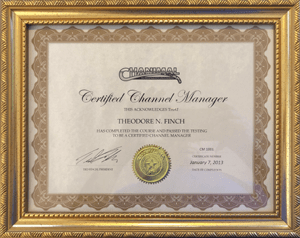Business Models – How To Make Money
The business model explains how an organization expects to make a profit and how it is positioned within the value chain. For example, a traditional retailer’s business model assumes that the retailer can purchase the correct mix of goods at a discount and sell them for a percentage markup to derive a sustainable profit. The retail model also projects a specific amount of foot traffic and a ratio of revenue per customer.
On the other hand, sustainable profit from early Internet business models was based on advertising revenues. Some of these were accurate, but most Internet models did not consider the lack of banner ad response. In these cases, the business model had to change, or the expected revenue would not materialize.

I was with one company that sold animation sets door-to-door at a higher-than-normal price (since the videos were specialized and aimed at a limited market), but allowed customers to purchase and receive the sets in installments with no interest–just an accumulated shipping cost since there were more mailings (1-2 videos/month).
A competitor tried a different business model without the installments, sending the entire series at once, and charging interest–it failed. The slight variation in the distribution business model made the difference between failure and 35 years of success.
While at Motorola, my team figured out the business model for entertainment set tops and achieved over 90% of the business. Competitors were selling “price” (instead of revenue potential) by creating inexpensive setups with limited services. However, once deployed, it was evident that these set tops could not produce enough services to generate sufficient revenue to pay for the network build-out.
As a result, the inexpensive set tops were used for trials, but had to be thrown away afterward and couldn’t be deployed because they lost money. The successful company was able to sell a higher-priced unit–that provided enough services to almost triple the revenue potential–and provided enough revenue to pay for the network build-out within an acceptable time frame. Having the correct business model can win the game.
I was with one company that carved out a large niche–training resellers (now called MarketStar). They realized that 67% of everyone that walked into retail (the type that existed at the time (i.e., Egghead, Software, Etc.) would ask for a recommendation, and 97% of the time they would follow it.
With this powerful information, they developed a business model to brand the resellers–since it was the point of influence that could make the greatest difference. This company grew from 15 of us to over 4,000. Eventually, as the market dynamics changed, the company developed a different business model to account for the changes…and continued to grow.
The Product Marketing Manager must evaluate various business models, decide on a profitable model, and take it into account within the Market Requirement Document (MRD) for a product or service.
Contact Info
Chanimal, Inc.
12109 Lake Stone Dr
Austin, TX 78738
512-263-9618
Click HERE to Email
Follow us on Facebook
NOTICE
I join a LOT of affiliate programs (connoisseur–like to see what they do), including Amazon, so there may be links throughout Chanimal.

